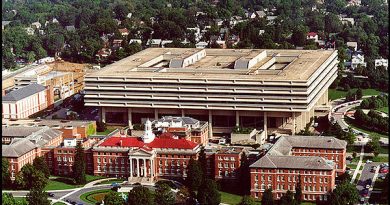Iran Deal: Too Early For Celebration
By Tela Wittig
Staff Writer
While the Western powers rush to congratulate themselves on their diplomatic success in the Middle East, they disregard the capture of American soldiers, the danger of growing tensions, and the multitude of other unresolved issues that remain in the wake of the Iran nuclear deal.
The deal’s fruition has been 13 years of uphill climbing—now is the time to see whether it will stabilize or pull the world down again. President Obama has publicly praised the progress made on the front of Iranian relations. However, tensions are still far too high to consider the progression of this accord as a success.
In an effort to maintain relations with all of the conflicting powers in the Middle East, the U.S. stands on both sides of a war in the making, pointing to the fact that the U.S. has provided military and financial backing to Israel for years. In a September interview with CNN, Iranian Supreme Leader Ayatollah Ali Khamenei said, “I’d say [to Israel] that they will not see [the end] of these 25 years.”
These aggressive sentiments set the scene for the failure of the nuclear deal that has been occupying headlines all winter. The nuclear disarmament of Iran aligns with U.S. interests in the region, considering the tension between Iran and Israel. However, the Ayatollah’s statement conveys that the terms of the nuclear deal do not preclude Iran’s future pursuit of aggressive action, or to conform Iran to the will of the United States. Instead, it would seem that Iran is doing as little as necessary to regain access to crucial economic opportunities.
When the sanctions were lifted mid-January, Iran’s economy gained roughly $100 billion in assets. Such a rapid influx of funds is an unpredictable variable when matched with a nation that has time and time again involved themselves in violence.
Economically speaking, new Iranian relations are a precarious venture, as it will mean that both European and American economies will have a stake in Iran’s success from here on out. Not only that, but should Iran use this financial influx to fund terrorism, it will be the money of the West that they are using to do so.
According to the deal set by the International Atomic Energy Agency (IAEA), Iran has fulfilled their end of the bargain and earned the removal of economic and trade sanctions. Therein lies the problem: this stage of the deal is complete, yet centrifuges remain active within Iran, and there are some which they have no intention of disbanding. Over 10,000 kilograms of uranium were shipped from Iran to Russia, and while that was a great deal of their stockpile, it does not disable Iran from continuing to enrich uranium. Iran still maintains 300 kilograms and 5,000 active centrifuges.
The combined effect remains to be seen, but as it stands today, it is hard to see a future in which the Iran nuclear deal becomes a shining example for peace through diplomacy in the Middle East.


